- You are here:
- Home »
- Author's Archive:
All posts by Michael Saif
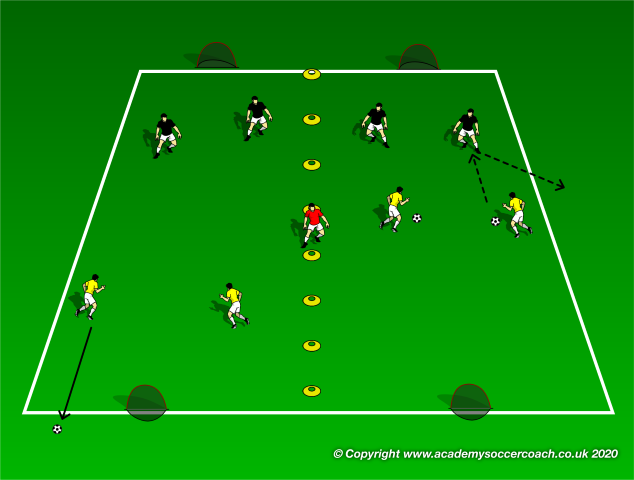
Side by Side Transition Game
By Matthew Carroll –
Description: This small sided game is used to improve game and spatial awareness with a focus on utilizing the 6 to switch play. It can also be used to teach defensive positioning and 1v1s
Setup: Create two grids that are connected in the middle. The size of the grid should be determined by the number of players and their skill level. Create two teams to play each other, then split those teams in two so team 1A will face team 2A and 1B will face 2B. Place one or two neutral players on the line that divides the grids. Place small sided goals at either end of each grid.
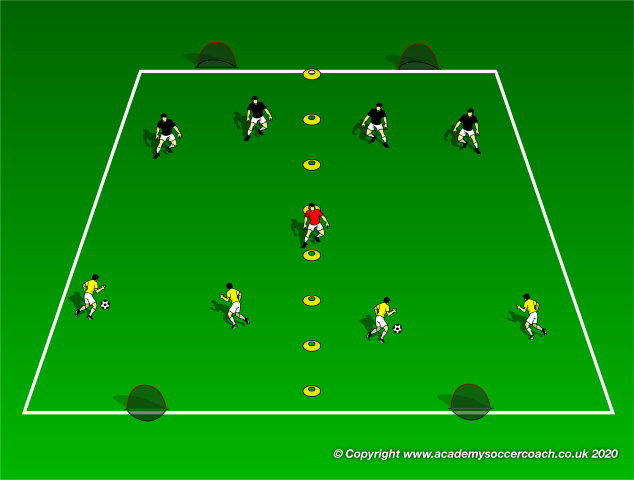
Execution: Play starts with a ball in each grid. Both teams play a small sided game against each other in their own grids. The neutral player, representing the 6, can receive the ball and either play it back into the grid where the ball came from or transition the ball to the opposite grid to the same team he received from the other grid.
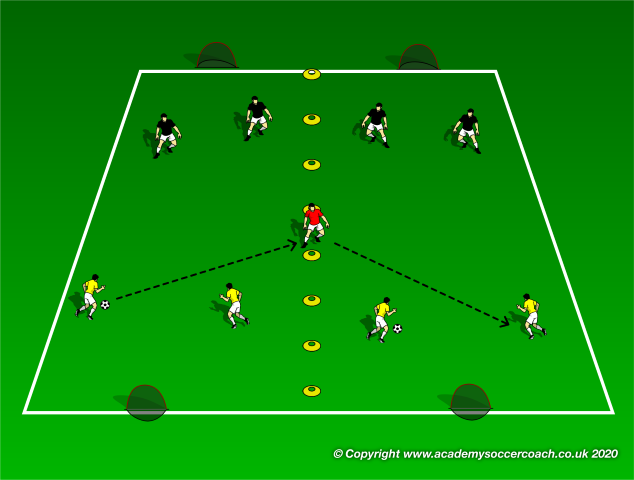
Once this happens the grid with two balls plays the game with both until a ball goes out, once one ball goes out the ball starts on the opposite grid with the team who should have possession on the other grid.

Winner is the team that has the most combined goals between the two grids.
Variations:
Depending on the system of the team, additional 6s can be added to more realistically depict the system
An additional stipulation can be added that as soon as the ball enters the opposite grid, that grid plays with the two balls, and the grid with none picks up another ball, this can continue as long as the balls stay in bounds, once they go out they stay out unless the grid has 0 balls in play.
By Matthew Carroll
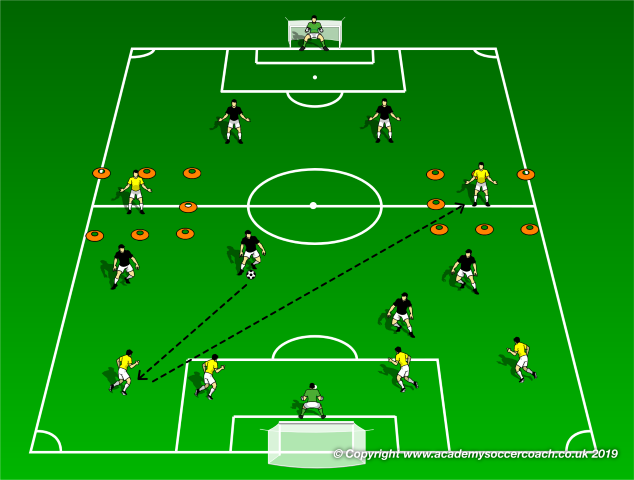
Diagonal Transition Game
By Matthew Carroll –
Description:
The Purpose of the Diagonal Transition Game is to develop, in a game like setting, player’s recognition of opportunities to play long diagonal balls on the counter to open up space on the opposite field for 1v1 situations of a striker against a outside back.
Setup:
Play on either full sided pitch or on condensed one with equal number of players facing off on even numbers on one side of the pitch. Two players on the defending team are placed in 15×15 grids that are “no fly zones'” for the opposition. Two players of the attacking team are placed on the opposite end as counter breakers
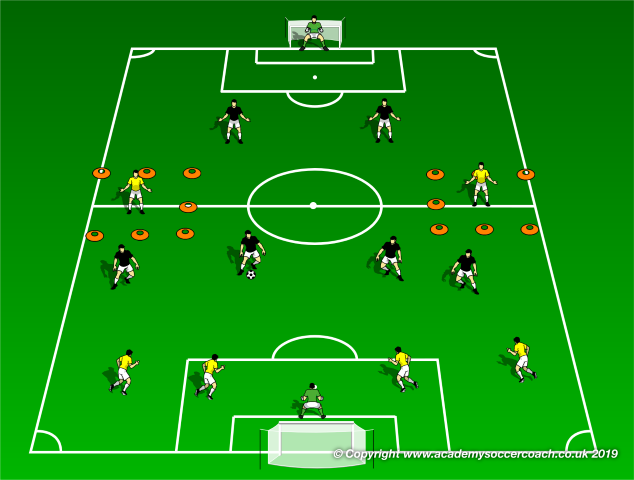
Execution:
The Attacking team goes towards goal attempting to score. If they score they maintain possession via a goalie throw to the halfway line. If the defending team wins the ball they are encouraged to play diagonal to one of the players in the “no fly grids” to spark counter attacks.

If unsuccessful the attacking team starts over again with a kick or a throw. If successful (ball lands in grid and grid player controls it) the two grid players then can enter the opposing territory, as well as two from the previous attacking team and two from the defending team creating a 4v4 on the opposite side.
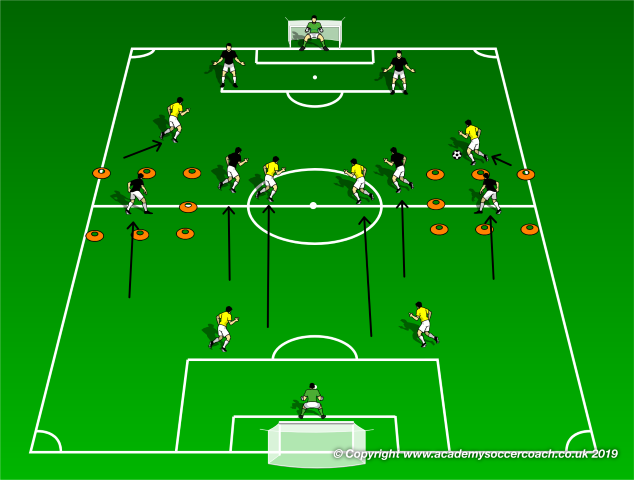
Variations:
Number of players, size of grids, and size of the field can all change.
By Matthew Carroll
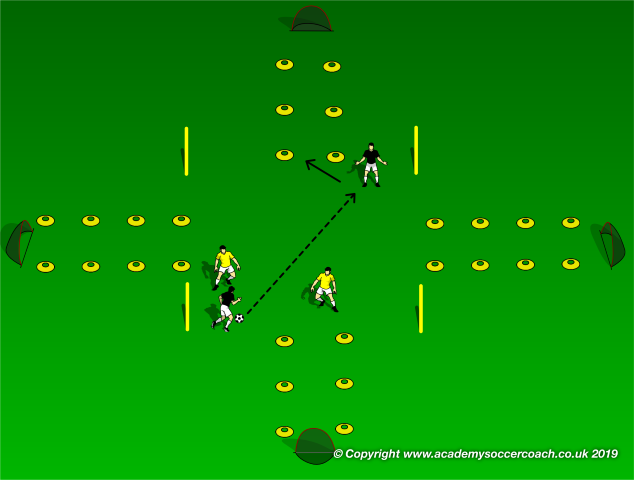
Swiss Flag Four Corners Game
By Matthew Carroll –
Description:
The Swiss Four Corners drill is similar to the normal four corners game except that instead of being a large grid it has four channels, similar to the shape of the Swiss flag. The purpose of these channels is to create opportunities for players to possess through the middle in a tightly contested area, then find long diagonals towards space on the opposite side
Setup:
Set up a grid with a central grid, and four long channels on each side. The size of the grid and channels is dependent on age, skill, and number of players. At the end of each grid add a small goal. Split the group into two teams each defending goals opposite of each other.
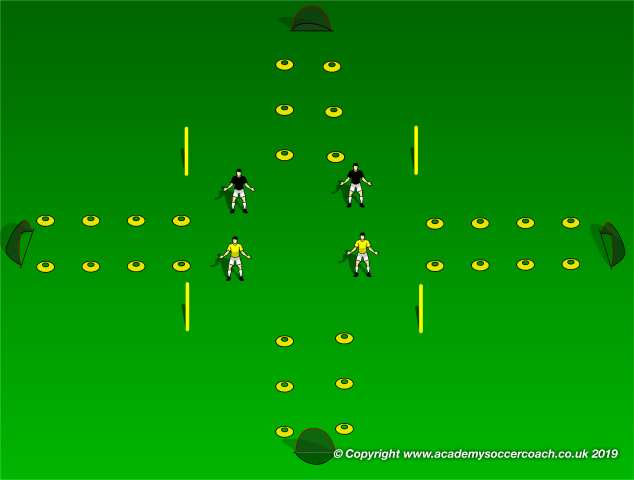
Execution:
Each team attempts to score on one of the opponents goals. The focus should be to draw the oppositions defense to one side and then switch fields to attack the vulnerable goal on the other side. All restarts come from the coaches as a 50/50 ball thrown or kicked into the center of the grid.

Variations:
Restarts can be adapted to the goal of the session
A third team can be added to create an overload for one team
Grid dimensions can be altered, or additional channels added
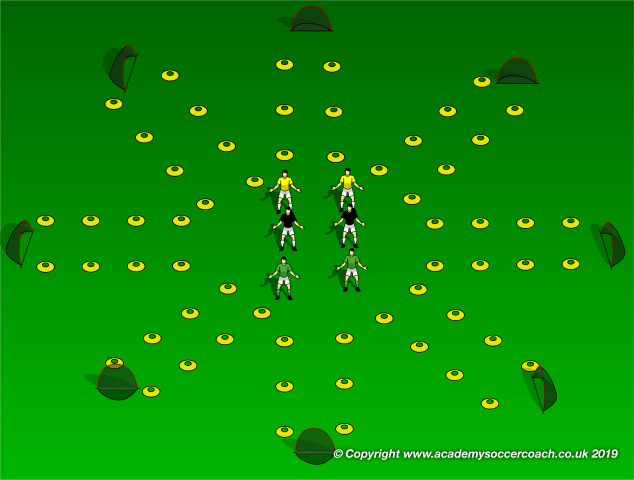
By Matthew Carroll
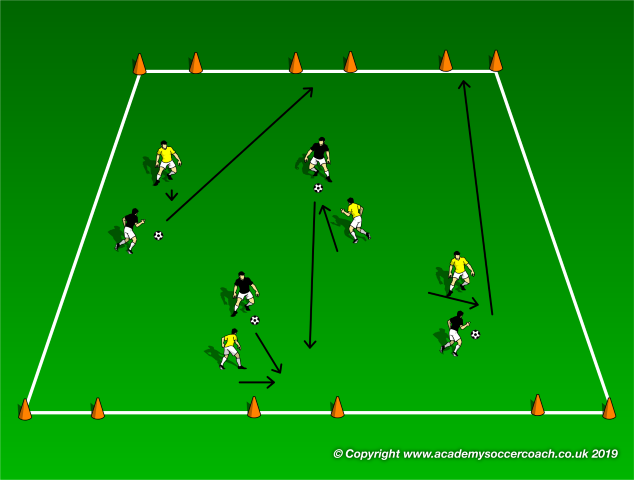
1v1 End Zone Game
By Matthew Carroll –
Description:
The 1v1 End Zone Game is meant to create a situation where players are competing in 1v1 situations, both offensive and defensive, but are forced to be spatially aware of three different areas they can score in, as well as adjusting to the traffic of the other players in the grid to recreate a series of highly realistic 1v1 duel situations.
Setup:
Create a grid (size dependent on number of players) with three end zone areas at both end. Every player then will pair up and have a ball between them. If the numbers are uneven one player can act as a “destroyer” player who creates 1v2 situations across the grid. Players should be spread out across the grid and each pair should decide who starts with ball.
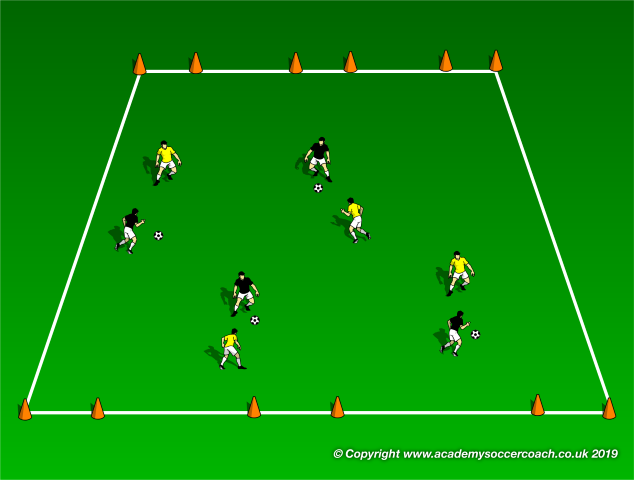
Execution:
On the coaches whistle the player on the ball attempts to dribble towards their designated end zone. If they are able to enter one of the three end zones successfully under control they earn a point.

They then turn around and attempt to reach the opposite end zone “make it- take it” style. If the defender is able to win the ball they then begin to go to the opposite end zone that the their opposition was trying to score on. Games should last between 30 seconds to 2 minutes. After the game the player with the most points wins.
Variations:
-The odd man out can be used as a bumper player rather than “destroyer”
-Players can switch possession after a score rather than the make it-take it style
-After each round players can switch partners to deal with a variety of offensive moves and defensive styles
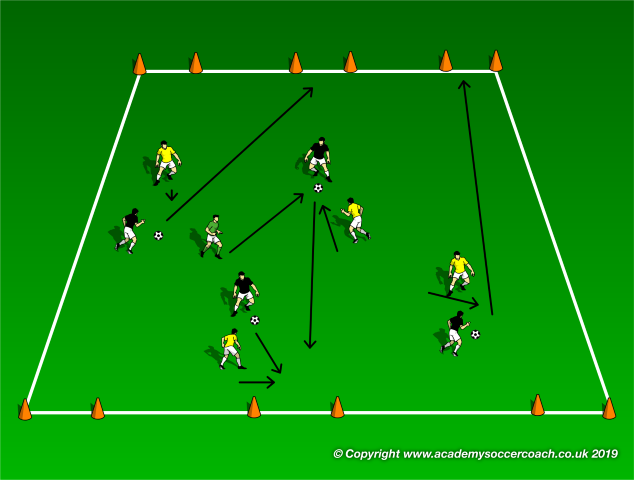
By Matthew Carroll
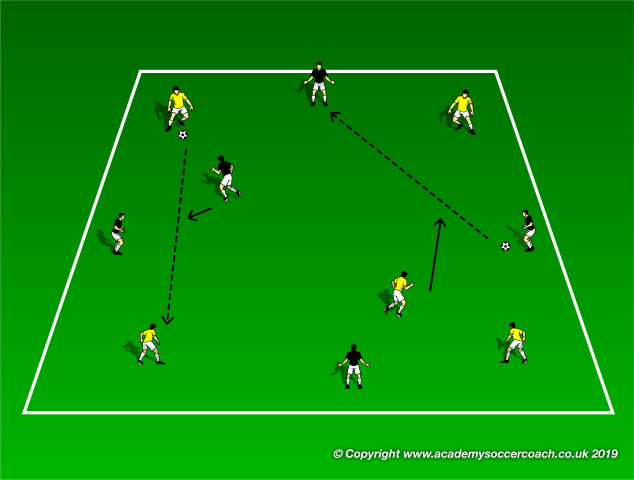
Two Team Rondo
By Matthew Carroll –
Description:
The purpose of the Two Team Rondo is to create a Rondo activity that involves increased levels of chaos by reducing space and increasing the number of participants in the average rondo.
Setup:
Two teams set up a rondo, every other person in the rondo is on one team, and vice versa for the other team. Each team has a player is in the middle. Two balls are in play simultaneously.
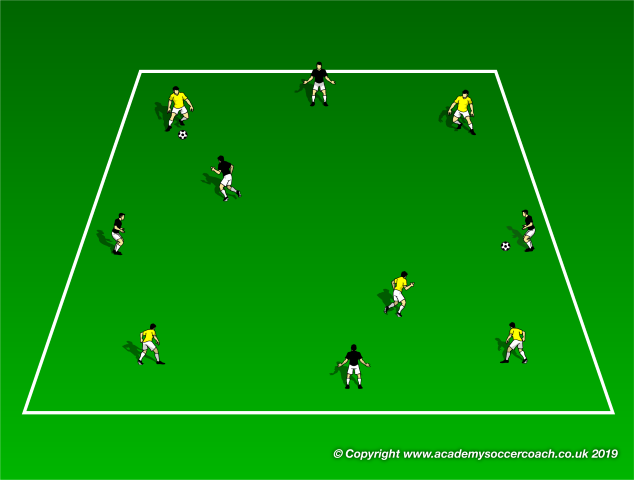
Execution:
Two balls are in play at once, with each team focusing on trying to gain possession of both balls at the same time.

If the player in the middle is able to win possession they pass to their teammates and that team is now in possession of balls. Players on the outer circle cannot try to win the ball off their opposition, but can intercept passes that come near them.
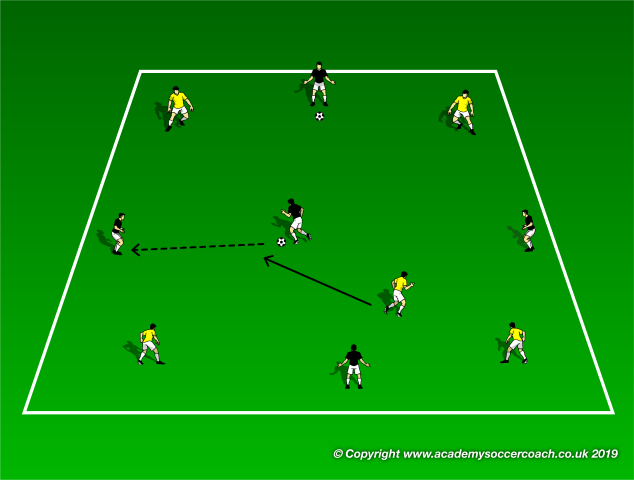
Variations:
The game can become more competition based by adding stipulations such as the team that holds possession of both balls the longest wins, a team needs to do pushups every time the lose possession, etc.
By Matthew Carroll
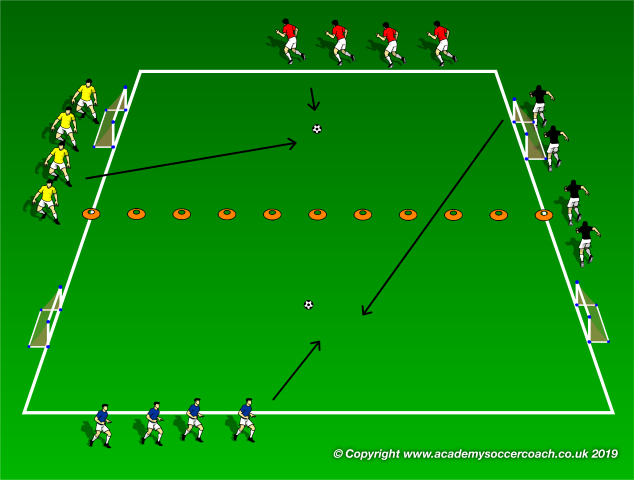
Pulse Scrimmages Based On Fartlek Training
By Matthew Carroll –
Description: A take on the classic Fartlek Run players participate in a light jog and then must quickly activate their muscles and mindset into playing mode, similar to the interactions they would see on gameday.
Setup:
Players are split into 4 teams with a field size determined by the number of total players. The field is divided in half for 2 small sided fields
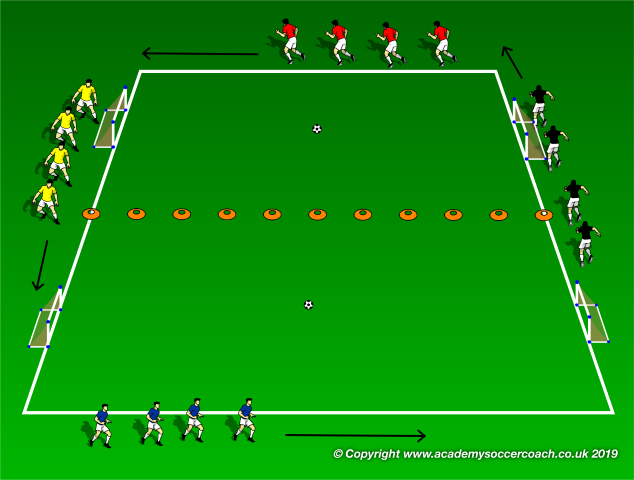
Execution:
The teams all jog around the perimeter of the field. The entire game should last around a total of 40 minutes so players are all jogging then every 5 minutes the coach calls out the teams that will play each other (I.e. 1v4 and 2v3) and those teams must sprint to the fields and play a small sided game for 3 minutes.

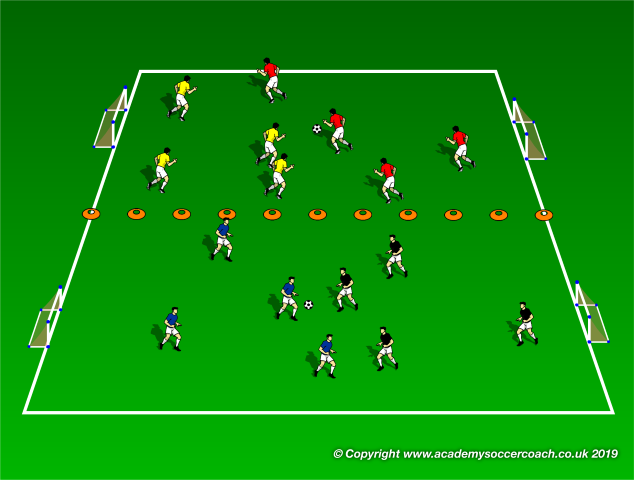
Games starts as soon as the first player is able to reach the ball. The winner of the small sided game gets a one minute juggle break, the losers immediately start the jog around the fields
Variations:
one field can be used with the games being one goal matches with the winner staying on
Games can be played w/ or w/o goalies.
By Matthew Carroll
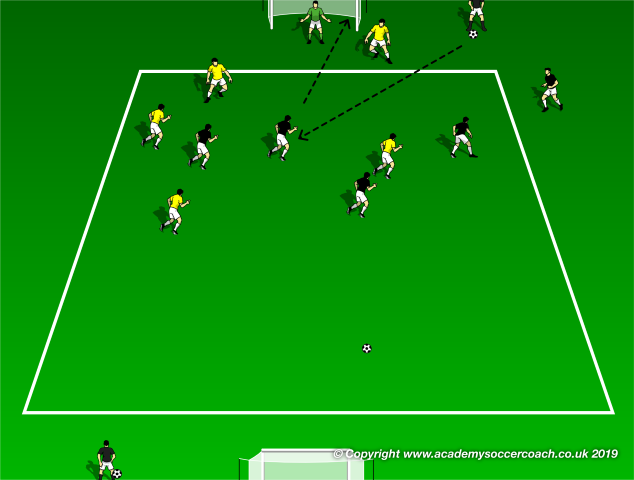
Live Raptor Bomb Game
By Matthew Carroll –
Description:
The diagonal pass from the endline is statistically the most dangerous pass in the game from an attacking standpoint. The Live Raptor Bomb drill attempts to recreate repetition of this scenario in as an organic manner as possible.
Setup:
One 30×30 grid is set up with a 5v5 being played within. At the edge of the far ends of the grids set up an 18 yard box. Two coaches or extra players should then be set up between the 6 and 18 on the end line with balls. Each goal should have a goalie and be designated as teams goal.
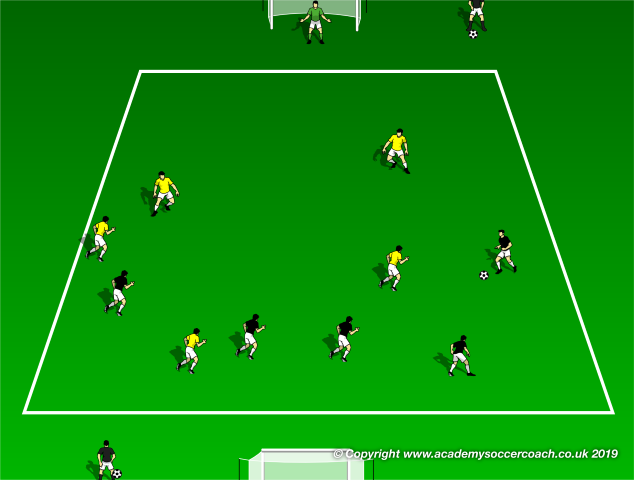
Execution:
Within the grid the two teams set play each other in a game of keep away. When the team in possession completes a designated set of passes they then open up access to go to their oppositions goal. Once they have access the attacking team leaves the ball where it is and runs towards goal, once they reach the 18 the coach/player with the ball on the end line plays a ball diagonally and back for one of the attackers to try and score.
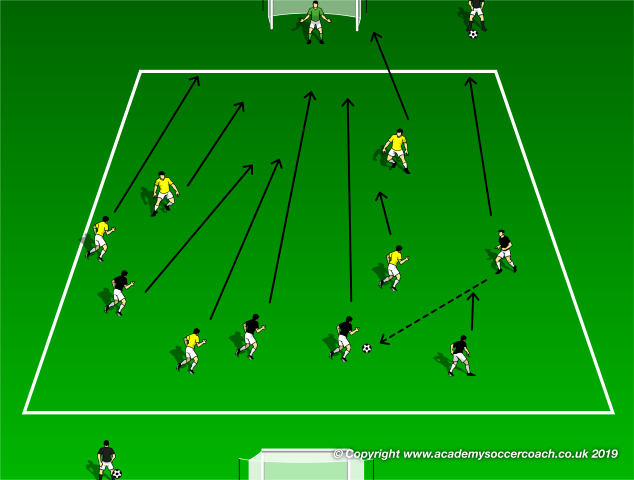

The defending team attempts to stop them. The attack is over once the ball leaves the 18 or a goal is scored. Play then resets inside the 30×30 grid.
Variations:
-Attack can be randomized, with the coach blowing a whistle and the team in possession can then go and attack.
-Defenders can be given targets to pass to to score points on the defensive side
By Matthew Carroll

The Most Effective Pass in the Game
By Matthew Carroll –
Description:
The purpose of the Raptor Bomb drill is to recreate the most effective key pass in the game, the pass directed from the edge of the box and backwards into the 18 with high repetition and pace.
Setup:
Set up a gate angled to cut over the corner of the 18, players should start 20ft beyond the 18 with a cone in the middle for one line, and a cone 20 ft away and lined up with the outside of the gate
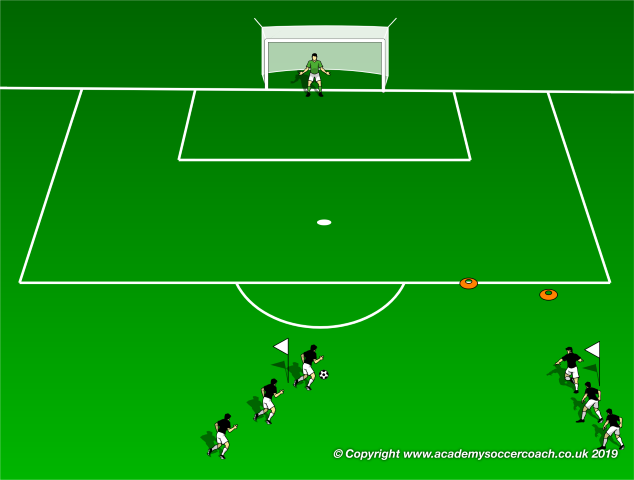
Execution:
Passing line plays it through the gate so that runner is forced to run outside of the gate and receive ball coming towards goal.
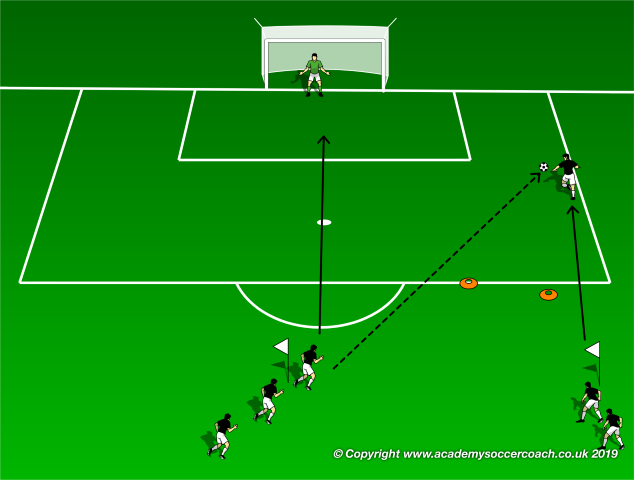
They then cross the ball to the runner who should be behind them. The runner then must one time the ball. After contact is made for the shot the next player passes the ball and the cycle begins again with pace. After a set amount of time players should have scored a set number of goals as directed by the coach.
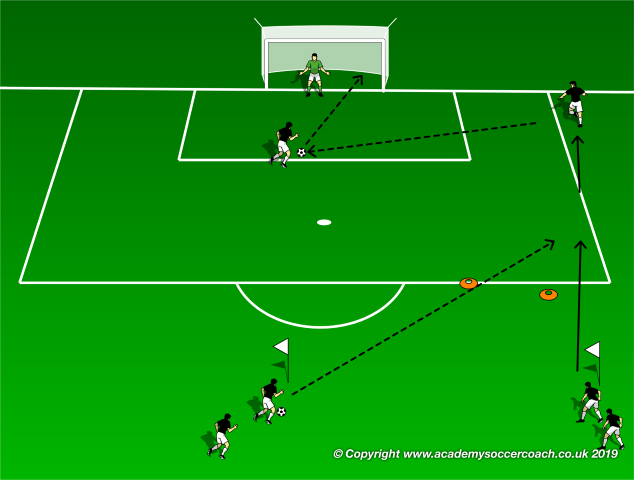
Variations:
Multiple runners can be used from both sides alternating . Goals and conditions may vary based on ability of players.
By Matthew Carroll
